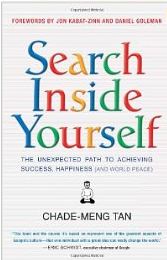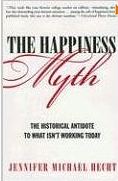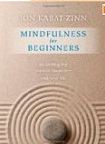“Sunk-cost bias” is the tendency to continue unsuccessful actions after time and money have been invested.
Frequent examples include:
- Holding poorly-performing stock market investments,
- Staying in abusive interpersonal relationships,
- Continuing failing military engagements.
In these cases, people focus on past behaviors rather than current circumstances, leading to emotion-driven decision biases.
Brief meditation sessions can help decision makers consider factors beyond past “sunk costs,” reported Wharton’s Sigal Barsade, with Andrew C. Hafenbrack and Zoe Kinias of INSEAD.
Meditation practices can:
- Enable increased focus on the present moment,
- Shift attention away from past and future actions,
- Reduce negative emotions.
The team asked volunteers to complete Mindful Attention Awareness Scale, developed by Virginia Commonwealth University’s Kirk Brown and Richard Ryan of University of Rochester.
They also measured participants’ ability to resist “sunk cost” bias using Adult Decision-Making Competence Inventory, developed by Leeds University’s Wändi Bruine de Bruin with Baruch Fischhoff of Carnegie Mellon and RAND Corporation’s Andrew M. Parker.
In a decision task, participants could take an action or to do nothing, as a measure of sunk-cost bias.
Taking action indicated resistance to the sunk-cost bias, whereas those who took no action were influenced by the sunk-cost bias.
Volunteers who listened to a 15-minute focused-breathing guided meditation were more likely to choose action, resisting sunk-cost bias, than those who had not heard the meditation instruction.
Barsade’s team noted that, “People who meditated focused less on the past and future, which led to them experiencing less negative emotion. That helped them reduce the sunk-cost bias.”
Mindful attention enabled negotiators to craft better deals by “claiming a larger share of the bargaining zone” in “fixed pie” negotiations, found Singapore Management University’s Jochen Reb, Jayanth Narayanan of National University of Singapore, and University of California, Hastings College of the Law’s Darshan Brach.
Effective negotiators also expressed greater satisfaction with the bargaining process and outcome.
Mindful attention also leads to a lower negativity bias, the tendency to weigh pessimistic information more heavily than positive, reported Virginia Commonwealth University’s Laura G. Kiken and Natalie J. Shook of West Virginia University.
The team assessed negativity bias with BeanFest, a computer game developed by Shook, with Ohio State’s Russell Fazio and J. Richard Eiser of University of Sheffield.
Participants associated novel stimuli with positive or negative outcomes during attitude formation exercises.
Volunteers who listened to a mindfulness induction correctly classified positive and negative stimuli more equally, expressed greater optimism, and demonstrated less negativity bias than those in the control condition.
Mindful attention improves decision-making and enhances negotiation outcomes.
It does this by reducing biases linked to negative emotions.
As a result, taking a brief mental break (“time-out”) during decision-making can improve choices and can reduce the possibility that “the wrong emotions cloud the decision-making process.”
-*How do you reduce bias in making decisions and crafting negotiation proposals?
RELATED POSTS:
- Decision Maximizers, Satisficers and Potential Bias
- Overcoming Decision Bias: Allure of “Availability Heuristic”, “Primacy Effect”
- Detect and Mitigate Decision Biases
- “Productive Pause”, Intuition for Better Decisions
- Beware of Seeking, Acting on Advice When Anxious, Sad
- Anxiety Undermines Negotiation Performance
- “Everything is Negotiable”: Prepare, Ask, Revise, Ask Again
- Do You Accept Bad Deals?
©Kathryn Welds











































 He outlines the A(ntecedant) – B(ehavior) – C(onsequence) model, initiated by a cue or a trigger that signals automatic or habitual behavior.
He outlines the A(ntecedant) – B(ehavior) – C(onsequence) model, initiated by a cue or a trigger that signals automatic or habitual behavior.



 Do good, be good, by “acting as if” the new behavior is a well-established habit, often through serving others in volunteer work.
Do good, be good, by “acting as if” the new behavior is a well-established habit, often through serving others in volunteer work.







